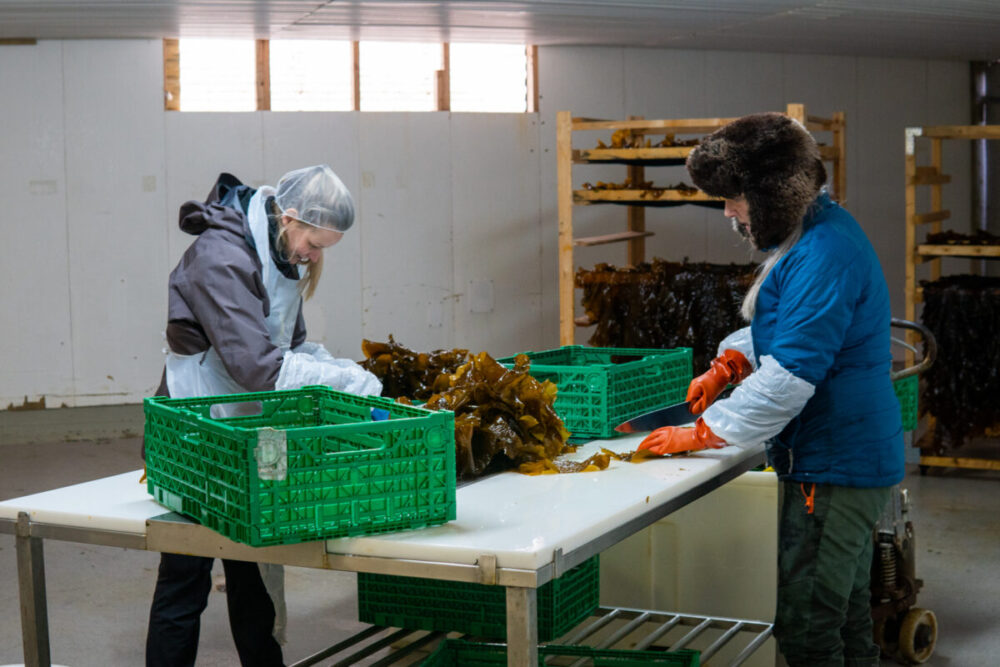From Seabed to Plate
Teamwork Henrikke Ulvund What Systems Oriented Design When 2022 Master thesis Case Study Northern Company Scholarship Sintef
An exploration of the future landscape of seaweed as a food in the Norwegian market
The current food system is experiencing many threats and there is an urgent need to shift the system into a more sustainable direction. Seaweed offers many possibilities within food and has the potential to contribute to some of the most urgent global challenges. However, today its potential as food in Norway remains untapped.
The aim of our project has been to better understand the challenges and opportunities that seaweed offers as human food in Norway. With a systemic approach, we explored a future vision for this sea vegetable to become a part of the Norwegian diet. By focusing on one of the challenges, which is the lack of information, we developed a portfolio of interventions that the seaweed industry needs to address for seaweed to become a mundane ingredient within the Norwegian diet.
Data was obtained from qualitative research to access key insights from the seaweed industry and get a better overview of the system.
From Seabed to Plate
Teamwork Henrikke Ulvund What Systems Oriented Design When 2022 Master thesis Case Study Northern Company Scholarship Sintef
An exploration of the future landscape of seaweed as a food in the Norwegian market
The current food system is experiencing many threats and there is an urgent need to shift the system into a more sustainable direction. Seaweed offers many possibilities within food and has the potential to contribute to some of the most urgent global challenges. However, today its potential as food in Norway remains untapped.
The aim of our project has been to better understand the challenges and opportunities that seaweed offers as human food in Norway. With a systemic approach, we explored a future vision for this sea vegetable to become a part of the Norwegian diet. By focusing on one of the challenges, which is the lack of information, we developed a portfolio of interventions that the seaweed industry needs to address for seaweed to become a mundane ingredient within the Norwegian diet.
Data was obtained from qualitative research to access key insights from the seaweed industry and get a better overview of the system.

Approach
Seaweed is an emerging industry in Norway and there are many possibilities of how its future could look like. To get to a common understanding of this future, and move towards a common goal, we wanted to understand the past and the current situation. This then helped us to define what a desirable and undesirable future could look like.
During our research, we observe positive signals for seaweed to become an important part of the food industry in the coming years. These signals helped us imagine what a desirable future with seaweed could look like and then determine what needs to be done to reach this desired one, which we called leverage points.
Leverage Points
As Donella Meadows (2009) states, leverage points are “places in the system where a small change could lead to a large shift in behaviour”. Based on our findings we uncovered five important leverage points where we think changes can lead to big shifts and help the industry grow. They are linked to either the public authorities, the industry, or consumers, and several are linked to each other.

Our Focus: Lack of Information
When we started the project, we realised that accessing information about seaweed as food can be challenging. If you search the internet for seaweed today, you will find a lot of conflicting and scattered information: from seaweed being a wonder superfood to being a dangerous ingredient, with sources ranging from experts and producers to bloggers and food enthusiasts. There is no clear indication of how much to use, and most seaweed recipes are limited to the Japanese nori and wakame. As long as there is no clear information hub from a trusted source, we believe that it can be daunting and confusing to the consumer.
However, information available online was not the only missing part. Other meeting points such as products in stores are lacking key information. We realised that seaweed products in retail stores both from Asian and Norwegian producers were not clear on some information regarding how to use the seaweed or how much.
As we continued our research, we concluded that the seaweed industry needs to provide better communication to the consumer. Based on this, we created a set of interventions.
Portfolio of Interventions
Within the leverage point of 'Lack of information', we found three main types of information to be missing. As shown below, these were: a clear and common language and classification system for seaweeds (semantics) then we have information on how to cook seaweed (cooking) and finally the nutritional benefits and risks of seaweed (nutrition).
The interventions should be considered as a conversation starter in this emerging field. On their own, they have little impact; it is when combined that they can make a big change.
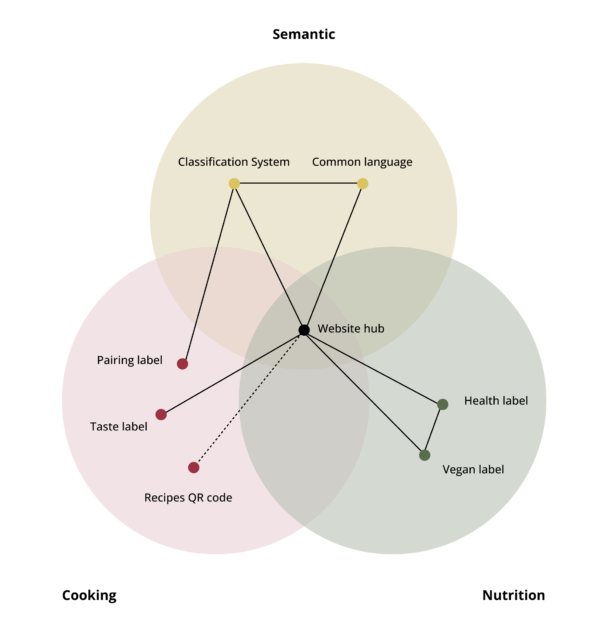
Semantics
We find the semantics to be the basis for all of the interventions, as it shapes the way we perceive, use, and treat seaweed. During this project, we have discovered a lot of confusion around the semantics of seaweed, especially, on what to call it and how to categorise it.
Seaweed has got many names (from Latin to scientific names) but few of these bring associations to food. Additionally, seaweed is not included in the food circle by the Directorate of Health. When introducing a new product in the food market there is a need for a linguistic standard. Right now there is no clear or common food vocabulary in Norwegian.
Therefore, our most important intervention is the need for a common commercial name. We propose the word 'Havgrønnsaker' as it communicates its origin, being from the sea (hav) and its nutritional features, similar to vegetables (grønnsaker).
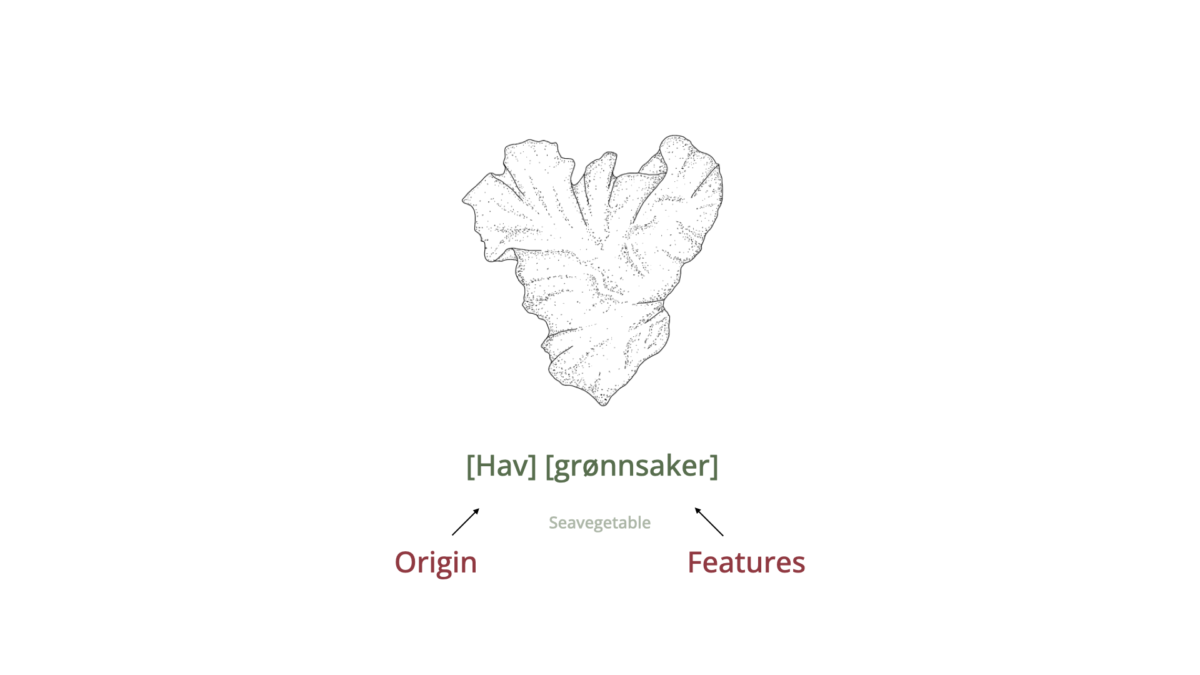
Online Information
As mentioned earlier, online information about seaweed as food is scattered and inconsistent. To address this, we prototyped a website called Havgrønnsaker. This site can work as an information hub guiding consumers on how to treat, cook, and pair seaweed in food. It can also provide information about the nutritional aspects of these sea vegetables. We suggest that the site is operated by a foundation, supported by The Norwegian Seafood Council, The Norwegian Seaweed Association and other actors in the industry.
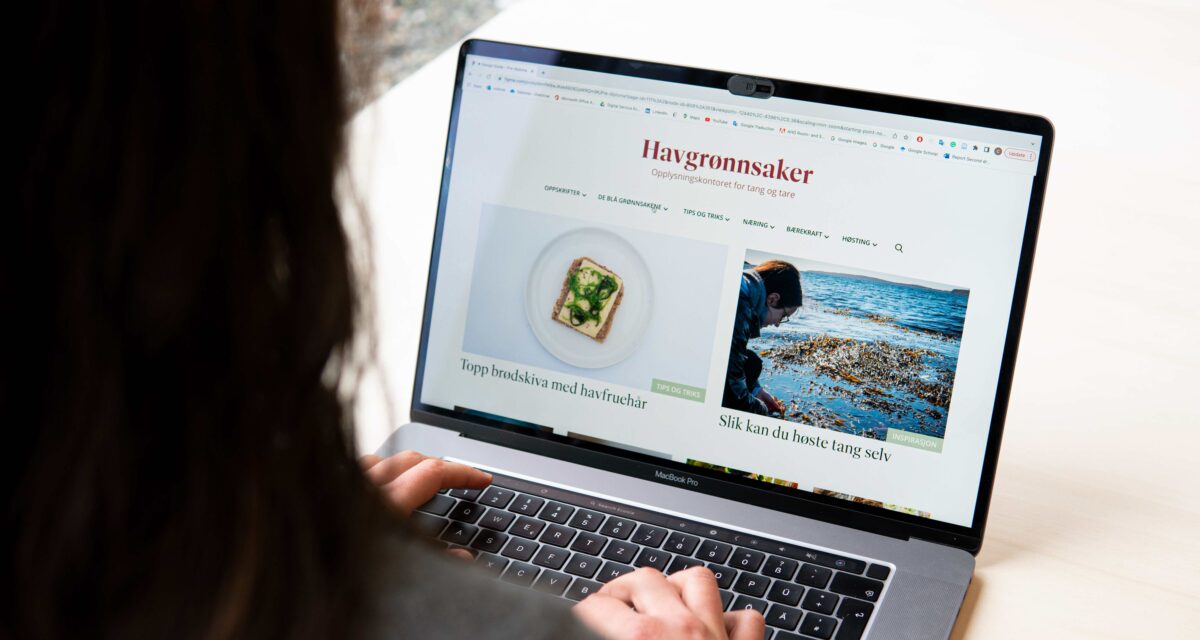
Iodine Label
From speaking to consumers, we realised that health factors can influence consumers' shopping decisions. If the information is not clear and tells you that consuming too much can be harmful, consumers preferred not to consume any of it.
As iodine is the biggest challenge when it comes to penetrating the food market today, we decided to focus on making this information clear to the consumer. Our goal with this label was to provide educated information about iodine intake to the consumer without scaring them.
With a lot of progress in processing the seaweed, we believe that in the future, iodine will not be a problem. As a scientist said: 'Recent results have shown that using seawater instead of fresh water improves the retention of minerals and has reduced around 90 per cent of the original iodine content'.
But between the present and the future, we hope that this iodine label can give the consumer a chance to make informed choices.
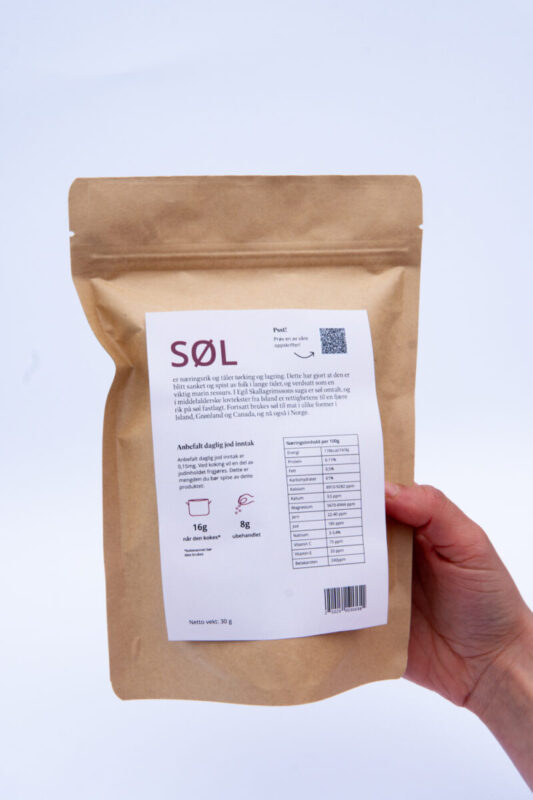
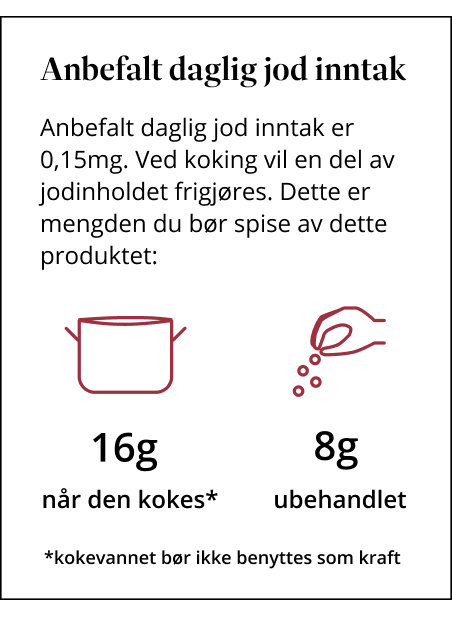
Cooking Labels
Norwegians are not used to using seaweed in and as food. As a scientist said during our interviews: 'If you give a Norwegian a bag of seaweed, they don't know what to do about it'.
To explore this further we made a prototype with symbols showing cooking instructions on a package, as shown to the top right. This label communicates how the specific seaweed product should be treated.
After testing this in a scenario with consumers, we validated our prototypes. People understood the information and felt that it was helpful. It made the product less intimidating to use.
Additionally, we made three prototypes to communicate the culinary features of the seaweed: one displaying what ingredients you can pair it with, another one which dish you can include it in, and the final one defining its taste profile.
From these tests, we learned that each label was suitable for different types of consumers, ranging from novice to foodies, to food experts. When reading the different labels, participants were surprised to see that seaweed can be used in so many different ways. So our conclusion is that cooking guidelines are an important piece of information that the industry needs to address when moving forward.
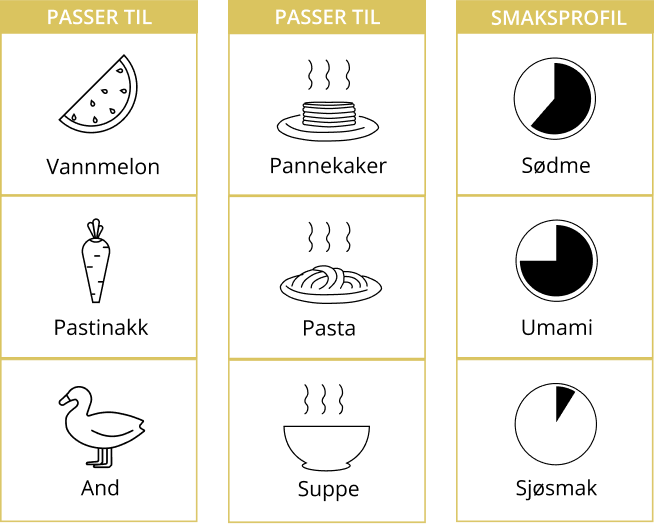
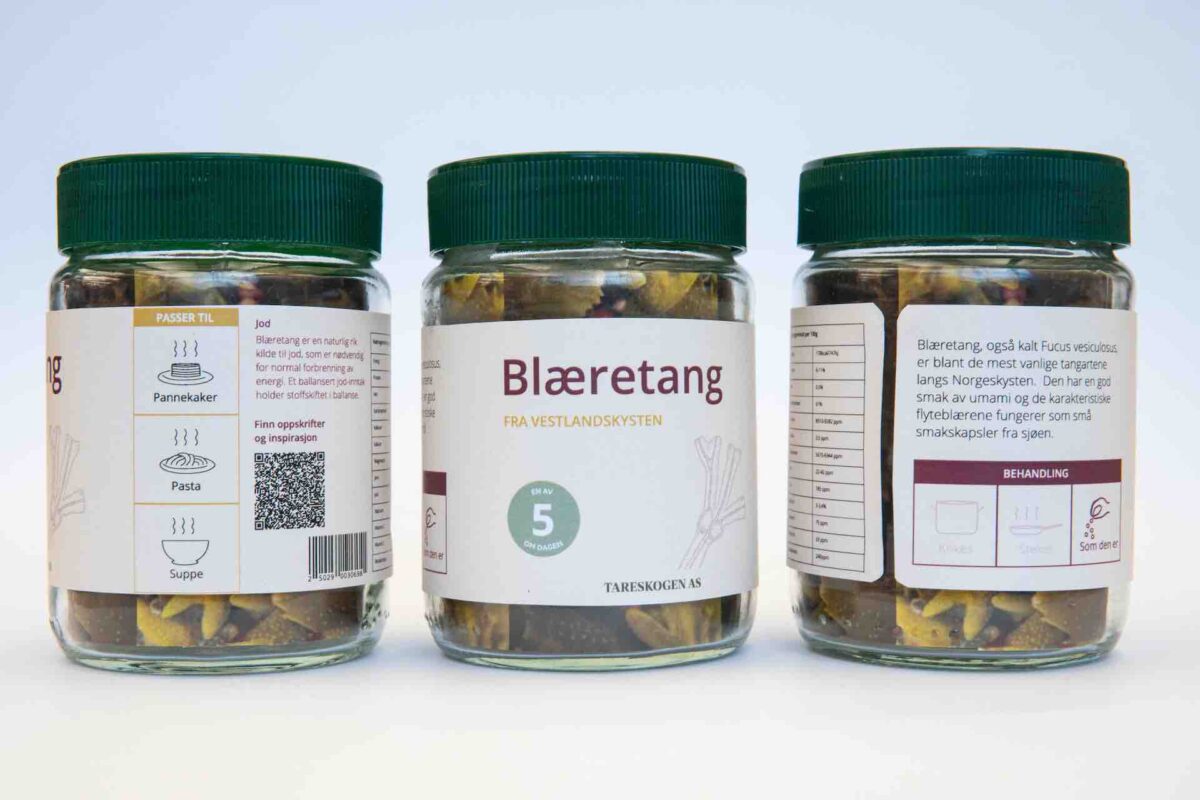
Process
Diving into a new topic for our diploma, we wanted to keep an open mind and let the process shape our outcome and deliveries. To support our research on the seaweed industry, we chose to do a systems-oriented design project and merged our interaction and service design skills to develop prototypes.
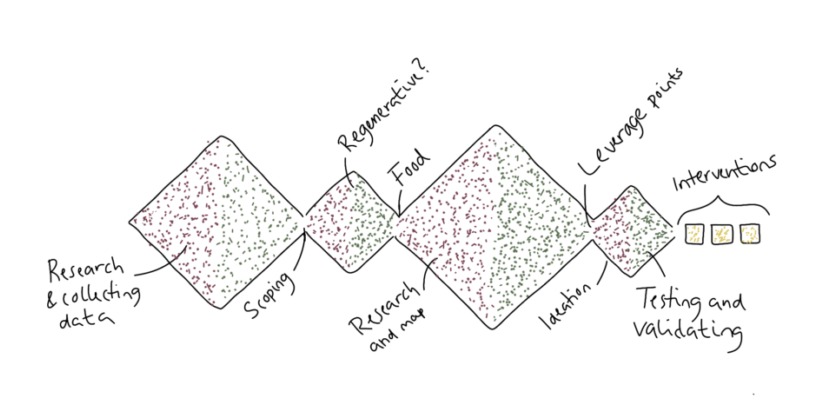
Case Study
The objective of this case study was to get a more thorough understanding of the status quo of seaweed as food in Norway. We wanted to gain more insights into seaweed production and learn about the barriers that producers face within the Norwegian market.
The case has offered us opportunities for digging more into the challenges that producers face when it comes to selling seaweed to Norwegian consumers.
